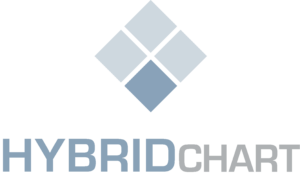Healthcare has advanced in leaps and bounds over the past two decades. From imaging to robotics to novel pharmaceuticals to medical devices – we have seen innovation pave the way for the potential of better patient care. Yet with all of this forward thinking, the mechanics of practicing medicine have remained fragmented and inefficient.
What do you mean you don’t have my records?
There is a (very reasonable) expectation that when a patient is referred to a specialist, that the records from the primary care physician will be sent electronically, allowing the consulting physician to review and reference those records. Well, this happens so infrequently, that I am genuinely surprised when records are actually scanned into the chart. Hang on. Let’s back up a step. “SCANNED INTO THE CHART?” Is this really the best we can do? Apparently so. Records get faxed (not a typo) from one office to the other, and those printed records are then scanned into the EHR and attached to the patient chart. As a physician this is barely adequate, allowing me to read the records as a PDF, and get the clinical information needed to care for the patient in front of me. But as a developer and founder of a medical software company, my brain starts to rattle and twitch. No structured data? No APIs connecting these offices? No ability to merge our clinical data together to do analytics? The lost opportunities are too countless to describe. Now back to the patient: “What do you mean you don’t have my records?” The look on their face is always the same: disbelief followed by frustration. At this point I usually launch into my speech about how every office has a different record system, created by different companies that basically refuse to work together to find a common exchange system. I barely get the whole speech out without a wave of nausea.
Did you look at my office records?
Caring for hospitalized patients sometimes feels like turning on a movie halfway through. I am playing catching up, trying to piece together the plot that ultimately led them into my care. If I am lucky they are my office patient, and I remember their story. More often it is a patient of one of my partners, or they are from out of state, or their doctor doesn’t come to my hospital. For patients from my practice you would think I could just review my office notes. Easier said than done. Until very recently most EHRs did not offer mobile apps to access records. Logging in from the hospital computer to my office system feels like hacking into a financial institution. Here’s the dialogue in my head: “Citrix? VPNs? Another login screen? How long is this going to take? Never mind.” That was the narrative for my own EHR. How on earth am I going to get into the EHR of a practice that is not mine? Well, we all know I can’t. “We have requested records from your doctor.” That should only take 2 weeks. Once again, I enter a patient’s room, and the they are truly in disbelief that I do not have access to any of their prior history that is not in the hospital’s system already.
I brought my records from the hospital
Patients who are discharged from the hospital need to follow up with their doctors. Bridging the gap between the inpatient and outpatient world is a basic necessity of continuity of care. We all want to avoid hospital readmissions, which is the dark corner of shame of medical care. So I am filled with amusement when patients are present for their office visit and proudly hand me the large stack of papers and proclaim “I brought my records from the hospital.” I pause, take a deep breath, and start to flip through dozens of pages of nonsense. Sometimes there is a date of admission. The list of meds is usually buried on page 6. Then there are lab results, which are conveniently clustered into 4 results per page, so a CBC takes up a ream of paper. Let us not forget the generic cartoons of whatever ailment was diagnosed during their stay, along with practical advice taken directly off of medical websites. There is very little useful clinical information for me to help care for this patient, let alone prevent the dreaded hospital readmission. So, once again I have to request records from the hospital. Guess how they get to me? Yes, by fax machine. Sometimes I get a FedEx package with the records, which is always exciting. Who doesn’t get excited about opening packages?
We can do better
Despite the technological advances in the medical world, the mechanics of medicine are still too disjointed to promote efficiency. The lack of data exchange is not just slowing things down. It is preventing better care, smarter care, informed care. As a profession we can do better. We need to adopt technologies that assist with integrated workflows. We need to open the doors and allow for connectivity between systems. Medical informatics is screaming for standardization and conformity of data exchange. We can do better. For everyone’s sake.
Meet EVOLVE by HybridChart – Our fourth generation software platform.
Take control of your entire workflow through a user-friendly solution created by a physician. Medical software too often fails to address the specific needs of providers. Rounding at one or more hospitals presents a unique challenge. There is the need for effective team collaboration and easy charge capture. Census management means true collaboration among provider and staff. Rounding at multiple facilities just got way easier. Covering on-call now has the luxury of essential information for clean hand-offs. Charge capture takes less than five seconds. Diagnoses are easy to find and follow the patient. Customized charge menus make it easy to enter the correct charge. Don’t let billing for your work slow you down. Charge in real-time and focus on caring for the patient.
HybridChart has numerous levels of safeguards against missed charges. The Charge Checker feature will scan every day of an admission and assure there are charges. Using the Charge Matrix you have visibility of all charges from multiple providers per day for any given patient.
Most practices see a revenue increase of 8-10% after using HybridChart – attributed to capturing every charge for every patient. Charges are complex enough with just the diagnosis codes and charge codes. To make your charges accurate HybridChart allows you to easily adjust the Date of Service and assign Secondary Billers such as nurse-practitioners and physician assistants. Modifiers can be built into specific Billing Modules or choose from a customized list managed by your practice. Seamlessly navigate our Charge Capture workflow and save time without losing accuracy.
An automated charge capture system may be the most profitable investment that you can make in your practice today.
You can instantly boost your revenue by 10% using our modern, high-tech and easy-to-implement charge capture system.
Smarter Rounding and Workflow Software for Doctors
At HybridChart, we provide technology that connects your healthcare team, increases efficiencies, AND improves your bottom line. HybridChart’s cloud-based software adapts to your practice’s unique workflow and will improve your profitability and patient outcomes by utilizing our 5 features: census management, charge capture, secure messaging, discharge management, and data analytics.
NEVER miss another charge and get PAID for the work you do!
If you are interested in taking your medical practice to the next level and want to employ the best hospital charge capture practice available in the industry, come visit our website at www.hybridchart.com, or call us at 1-877-684-0608 for a demo today!





